By Kajal Gaba
Photography: courtesy Once Upon My Wall
Read Time: 2 mins
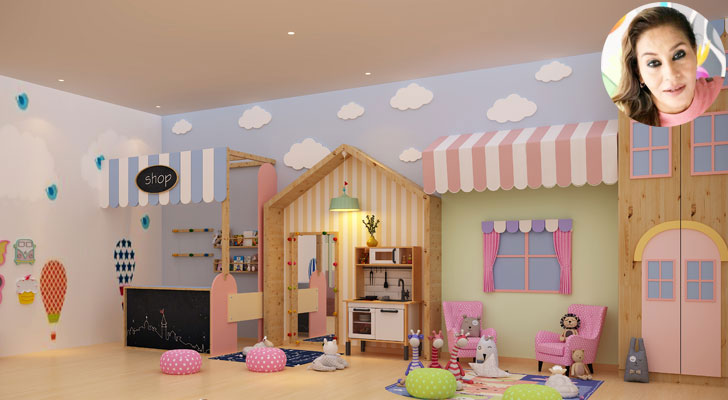 |
| A corner designed for Dramatic play interaction (inset) Designer Kajal Gaba |
In the first of this three-part series on the impact of interior design on the holistic development of a child, designer Kajal Gaba introduces us to the uniqueness of a child’s visual perception…
The first six – and especially the first three years – of a child’s life are the most important. The power of imagination formed during early childhood affects one’s entire life. It, therefore, becomes imperative to address certain must-dos to stimulate and amplify a child’s imagination during this period.
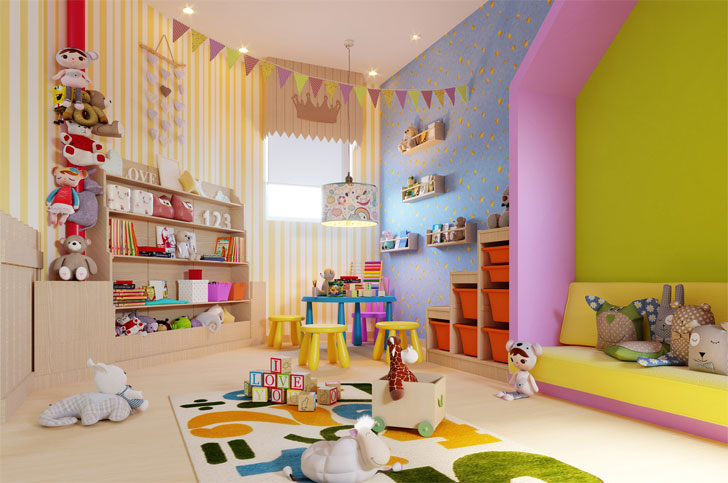 |
| A cozy reading & play corner |
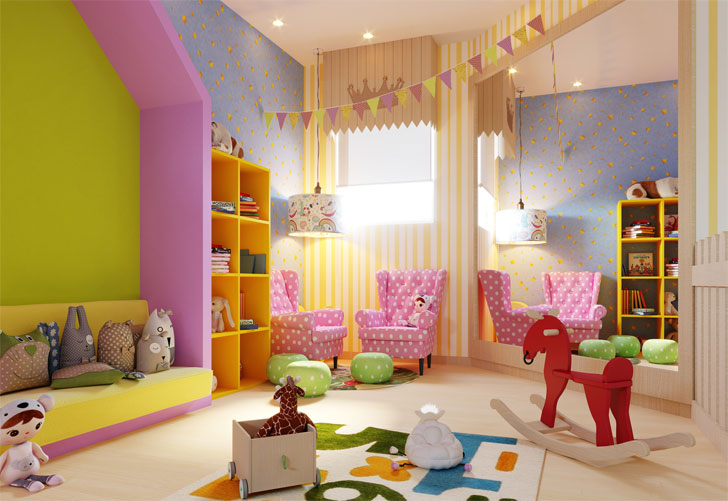 |
| It is important to note what the space ‘says’ to the child |
A significant part of this development is to understand that children and adults view the world differently. An adult experience focuses on how to use the space; for a child, it is more about what the space ‘says’ and how he connects and experiences it. A child accesses and reacts to a space by the explorative opportunity that it lends out to him. It crafts and curates his spatial perception.
Integrating elements that would enable holistic development in the child then becomes the prerogative of the design of that child-centric space and environment. When an area is spatially well defined, the child benefits in terms of social interaction, cooperative behaviour, and exploratory behaviour.
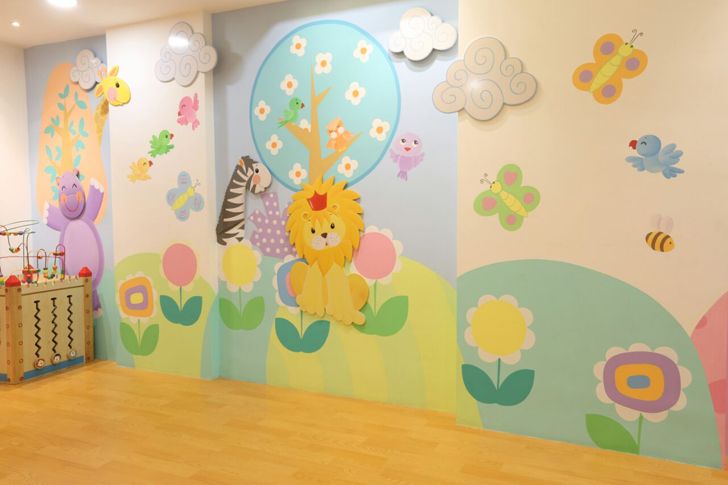 |
| Use of textures, symbols and wall art is an effective way of stimulating creativity and enhancing the space-child connection. |
 |
| An activity area designed to lend multi engagement opportunities, facilitating learning through play |
All the elements used in the interior design – shapes, lines, colours, sounds, textures, images, and symbols – psychologically impact the child’s personality and mood. With some planning, one can even influence the child’s visual, auditory, somatosensory, vestibular, proprioceptive, and olfactory sensations – and strengthen cognitive development.
Have you ever observed a toddler at close quarters? He will always prefer spaces or corners that have lower ceiling height and tend to be cosier in nature. He will also have a problem with his perception of distance. These concepts of geometry and visual perspective change as the child grows older.
Likewise, psychological, and therapeutic effects of colour on the child’s perception and subsequent development are undeniable. Colour affects the autonomic nervous system, muscle tension, cortical activity, blood pressure, breathing rate and enzymatic and hormonal secretions. Different colours stimulate different glands. Consequently, the interactive and exploratory elements in a design address the importance of the child’s sensory perception. Use of textures, symbols and wall art is an effective way of stimulating creativity and enhancing the space-child connection.
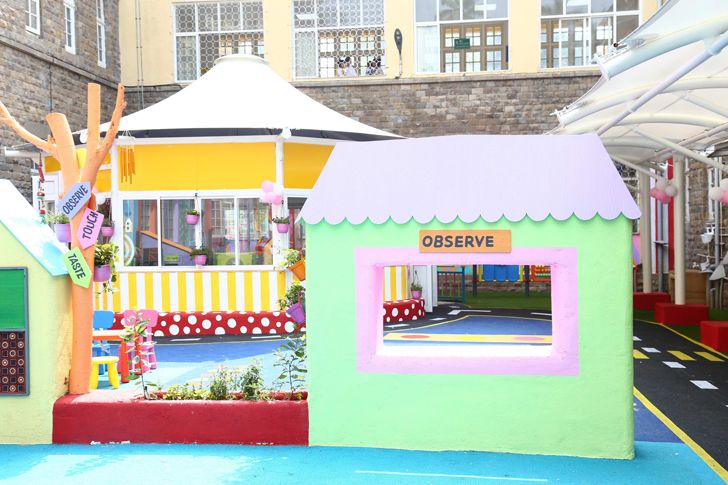 |
| Outdoor therapy park designed to integrate sensory exploration, play and therapy at Bai Jerbai Wadia Hospital for Children, Mumbai |
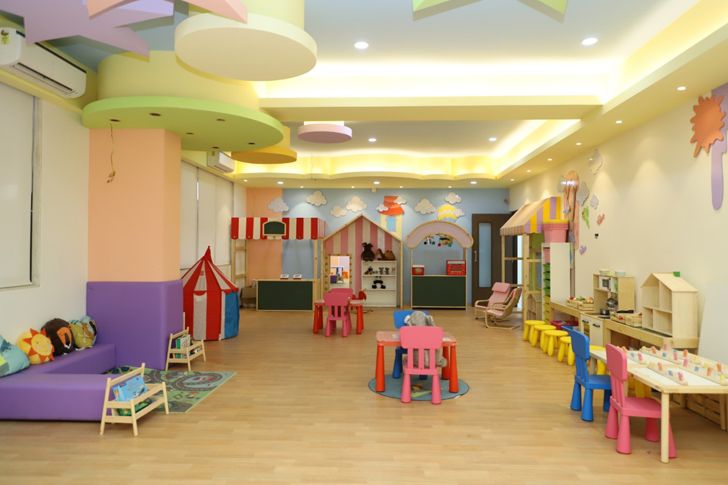 |
| Providing a variety of engagement opportunities is important. Activity room Balaji International school, Mumbai |
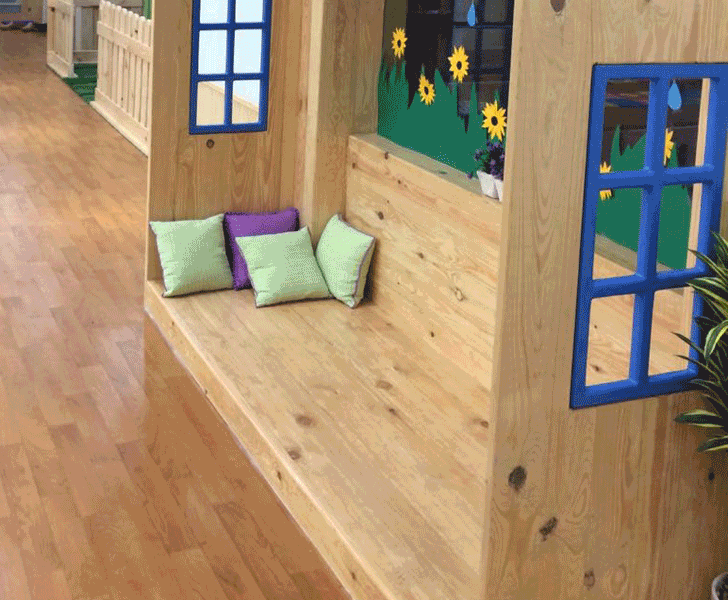 |
| A nature-induced sitting space at Blooming Buds Childcare, Powai Mumbai |
As a designer, I strive to impact the child through my design. The colour palette that I use in my designs is not random, nor just mere attractive combinations, but specific for their functions. Balancing them well with the right light is equally important. Designing an environment for children is not only about designing the space to make it look aesthetically appealing. It is about providing an appropriately designed environment that will facilitate and nurture holistic development in the children, a space that is therapy in itself… a space that childhood memories are made of!
Kajal Gaba is an, artist, illustrator, and specialist designer for creating Childcare, Learning, Play and Therapy spaces for children. The last 26 years of her practice have been centred around the fact that ‘child development is directly linked to the environment a child is provided’. As a pioneer in the field, Kajal mandates a perfect balance of therapy, play, exploration, and interaction in her designs, with the colour palette as the core essence! She can be reached at kajal@onceuponmywall.com
Thought n Impact is a platform, where India Art n Design (dot)com encourages professionals to share conceptual thinking, comment on theories and practices of art and design, give voice to the impact of design and so on... If you have something relevant to share, write to us at editor@indiaartndesign.com

No comments :
Post a Comment